Ashley Carroll joins Marcel to discuss how holistic people-first experiences, combined with the quantifiable aspect of strategy, will increase cash flow.
About Ashley Carroll
Ashley Carroll is a solutions-focused COO at Momentum Accounting. Her passion? Helping CEOs bring their vision to life while prioritizing team wellbeing.
Ashley’s expertise in sales and project management integrations has earned her a reputation for successful client interactions, resulting in 20% YoY revenue growth. She strives to balance maximizing profitability and creating a supportive, holistic employee experience.
Ashley is dedicated to revolutionizing the business world and creating a thriving environment at Momentum Accounting, where well-being and an amazing client experience for digital and creative agencies are top priorities.
Ashley cherishes unique experiences of her own – be it enjoying an LCD Soundsystem gig or questing for vinho in Portugal alongside her husband.
Points of Interest…
- What makes professional services businesses unique 2:55
- Misconceptions around increasing cash flow 5:44
- Best business model to increase cash flow 9:39
- Increase cash flow with reverse engineering 17:28
What makes Professional Services Businesses unique
I spend quite a lot of time talking about the (perceived) tension between two intrinsic things: profitability as a service firm and the well-being of your team. It won’t surprise you to learn that Ashley also spends an inordinate amount of time considering this very topic. The similarities don’t end there…
We at Parakeeto provide professional services, with a focus on digital agencies. As COO at Momentum Accounting, Ashley also runs a professional services business. I’m keen to get her take on what exactly a professional service business is, and what makes it unique.
Why does it require a different approach to not only finance but also how we think about profitability? What sets them apart from other businesses?
“As a professional services company, your most valuable and most finite resource is your people, your humans. There is so much power in their hands to make or break your business… In the context of this conversation, professional services are firms whose primary revenue stream is using their people to provide professional advice, or data verification analysis, synthesization, and help them collaborate on their business growth. For us, that’s in accounting.”
There are professional services businesses providing consultancy across an array of fields. They tend to be more casual or approachable than your – in Ashley’s case – typical accounting firm. And that’s why Momentum Accounting tends to focus on the creative agency space.
Providing consultancy services is, for all manner of tactical reasons, innately more complicated than being a product business. Why? Well, because we’re not necessarily dealing with something tangible, we’re dealing with time as a commodity, which can be hard to measure.
It’s not quite as simple as keeping track of all the materials we bought and how many products we sold to figure out what our costs of goods sold were. And that’s before we even address the complexities of bringing accruals into the mix.
Misconceptions around increasing cash flow
If you really boil our business model down, we’re generally buying it in bulk from a person at a guaranteed rate, and we’re reselling it in fractional increments at a profit to our clients.
One of the very legitimate ways to make the business more profitable is to – for want of a better term – exploit people, to extract more time from them than what is contractually agreed upon. And, unfortunately, that has influenced this conversation around profitability. There are a lot of people that believe that is the only playbook/requirement to make the business more profitable.
Naturally, I’m curious to learn what other misconceptions Ashley might be hearing from clients when the subject of profitability rears its head. What needs to be reset before she can get into a meaningful engagement with that client?
“Start with the longevity of your team members and how long they stick around for; you transfer a lot of information to your team members. We can talk about the cost of team turnover and churn, or the positive impact of a happy, satisfied, and fulfilled team member versus someone who doesn’t feel that way. What impact will that team member have on your clients and your services?”
When you step back from the day-to-day running of a business, you’re putting a lot of responsibility into your team’s hands. Therefore, you need to treat them with the care they deserve for taking on that responsibility. And, in Ashley’s vast experience…
“Well-taken care of teams provide really good care to your clients, which in turn creates longevity and maximizes lifetime value for your clients, then your business, and then for you. I operate from the idea of wanting to create a lifestyle company and not necessarily wanting to scale something to sale in the next five-to-ten years”
Even if you are on that trajectory, your reputation will follow you irrespective of where you go. The best reputation you can have is that you take care of yourself and that you take care of your people. That’s how you make money while making the world a more pleasant place in the process.
Finding the best model to increase cash flow
Circling back to tactical matters and the congruency operationally of what we sell, how we scope that, and how we deliver it. Tactically, it’s so important because we need visibility to resource plan. The absence of that visibility creates a lot of whiplash for your team, a lot of late evenings and weekends. And, I think, a lot of people have come to believe that that’s just a part of working in the agency.
While resource planning isn’t easy, if you have a good system in place it becomes easier. It’s a critically important part of not only optimizing profitability but also protecting the best interest of your team and making sure that you’re managing how overworked they get.
Several clients of ours saw increased profitability when they were able to get more forward visibility. In some cases it not just doubled, it tripled. Their team worked less overtime and was more consistently utilized, and substantially less stressed ***more on this from 10:53***
In short, leaders need to recognize the kind of business they’re trying to run. For example…
• Agency A: Are you selling a highly competitive, commoditized service? In which case, are you going to adopt a deliberate strategy, devise an operational plan, find ways to locate lower-cost labor, and have a very tight process plus utilize at this level? This, for a lot of agencies, is a viable model for both you and your employees. Why? For the simple matter that the expectations are clear and (presumably) they’re well managed. In this instance, well-managed means that abstracted time materials are being sued to really regulate their resource planning process. You can very easily modulate how utilized people are.
• Agency B: Conversely, I talked to an agency owner where they’re the premium provider. They’re super specialized and charge twice as much as all their competitors. They made the decision to say, “Well, we’re gonna take that kind of premium price and we’re gonna invest that into buying our team a four-day workweek. We’re going to buy back that 20% of their utilization and we’ll redeploy some of that into the culture, into the lifestyle. As a result, they’re able to attract talent and it’s a self-fulfilling prophecy.
These are the strategic considerations that will pave your way. As a founder, you need to be clear about one fundamental thing, and that is: “What did I set out to do when I started this company?”
Then you can work backward to see how that influences the way that you approach all of these things – the targets you set around utilization, the prices you charge, and how you look at your finances… ***Ashley brings more insight to this from 13:21 minutes***
Side note: Speaking of utilization targets, the Agency Profit Toolkit has templates that you can use to model out different utilization scenarios, to see it’s impact on your profitability.
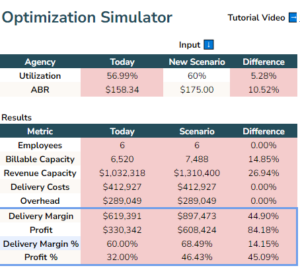
Interested? Pick up your free copy at the link below:
Increase cash flow with reverse engineering
We came into this conversation to talk about profitability and the team, but we seem to have unpacked a more abstract set of concepts around this that are not talked about enough. It really boils down to what game you’re playing. Because let’s face it the scoreboard is the same.
You need to have income, a certain amount of gross margin, you need to pay for overhead, and then you have some left over. That’s the same for every business. For every professional services business, those ratios are always the same – but there are many ways to achieve that outcome. And the constraints will be different, depending on what game you’re playing.
You might be playing the “low-cost” game, the “high-volume” game, the “high-price” game, or the “couple of massive projects” game. Only the strategy is different. Know the game you’re playing. And then adapt the strategy to do that.
As a founder, reverse engineering your end goal is a critically important thing. Otherwise, you end up with this disjointed operational strategy. It seems like you’re borrowing elements from all these different business models – which are often inconsistent with one another.
Key takeaway…
Ashley and the team at Momentum Accounting essentially see how the sausage is made for the backend of all these creative agencies. They see the strategy, the way you’re packaging and pricing your services, and how you’re running your teams. As for your payroll? They see that too; what you’re paying your employees and the benefits they get… They see it ALL.
And, speaking from a position of experience, Ashley sees the overall benefit of being an agency that has a cohesive, organized, thoughtful, holistic approach to both their client experience and their team – regardless of what business model you choose.
“There’s no right or wrong way. That’s the beauty of entrepreneurship. All I ask as an operator is to know yourself and grow the business in a way that brings you joy and brings people on board.”
See more from Ashley…
Did you learn anything new from this episode? Let us know in the comments below! We have helpful blogs designed to bolster your agency profitability, such as How To Calculate Your Billable Employee Cost-Per-Hour.
Our next installment of #APP, on June 14th, will see Marcel talk with Alyson Caffrey for our 115th edition. Our previous blog – Episode 114 with Nigel Thomas – can be viewed here…
Avid #APP Listener?!
We would be eternally grateful if you could leave us a review…
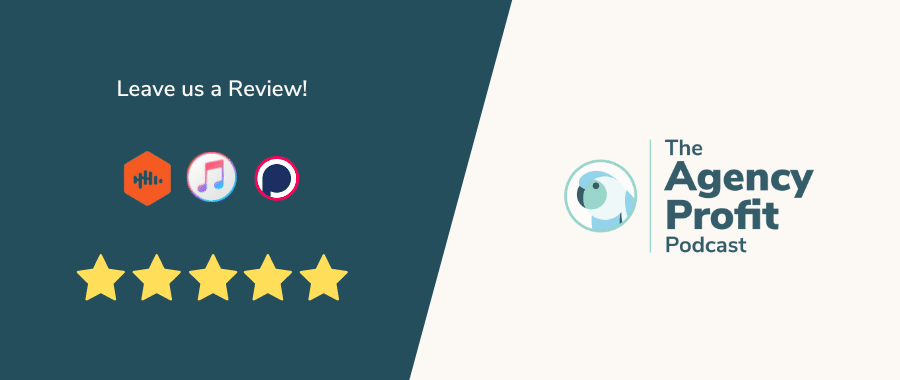
Agency Profitability Tool Kit
If you’re looking for more resources to help you improve your agency’s profitability, check out the Agency Profitability Tool Kit. It’s full of templates and checklists used when consulting clients. This helps them improve profitability by over 100% in under 60 days.
Fill out the form below for your copy!

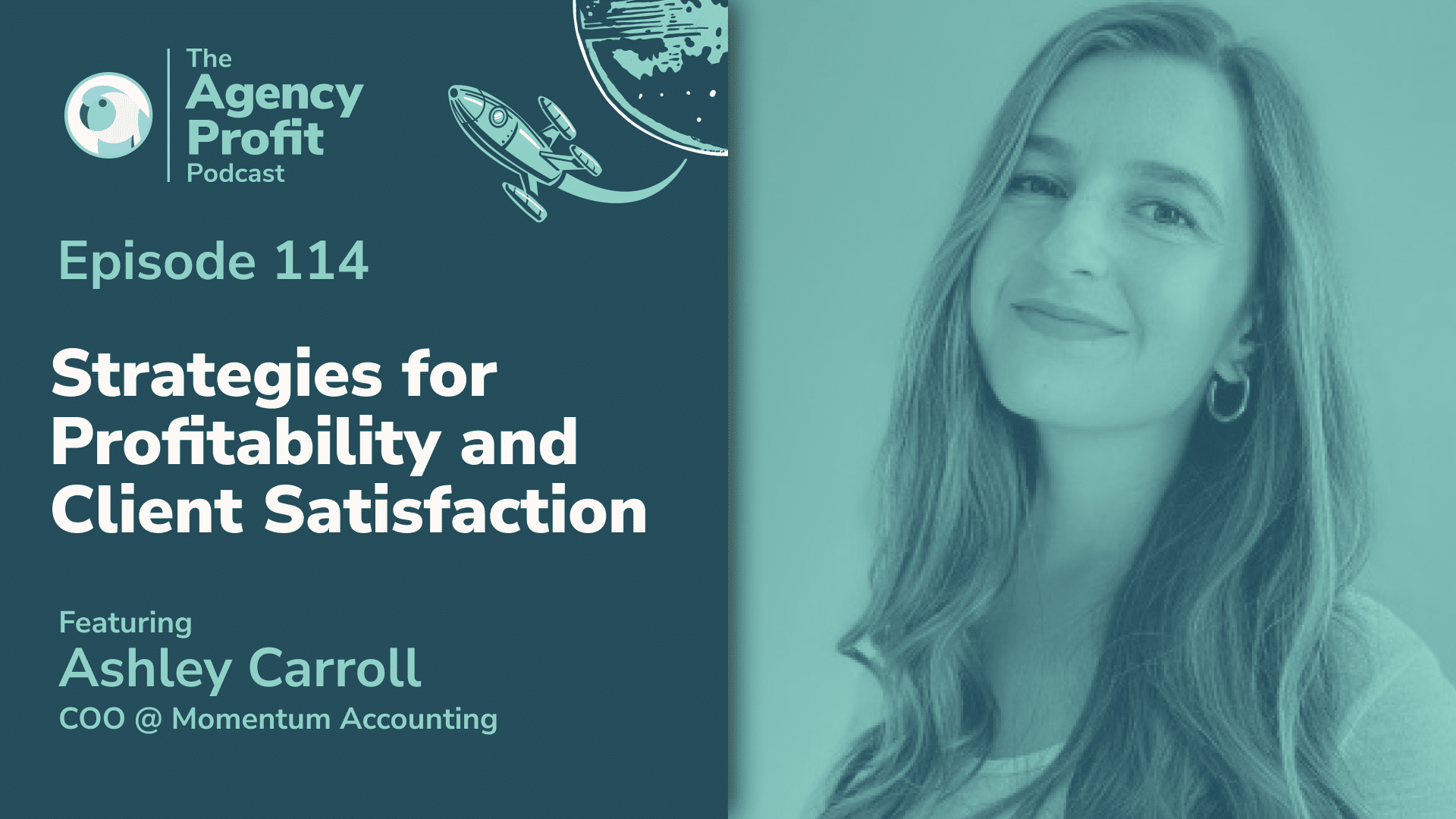
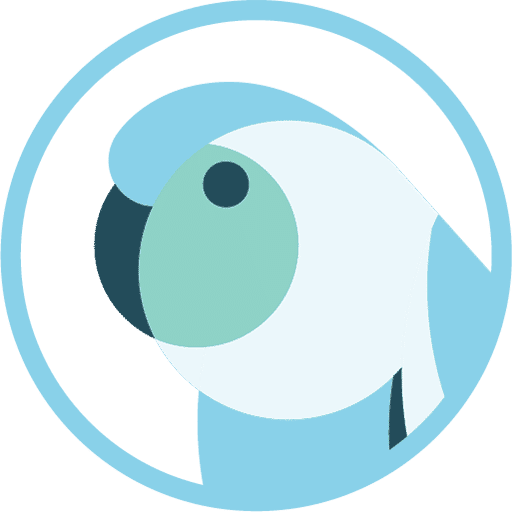

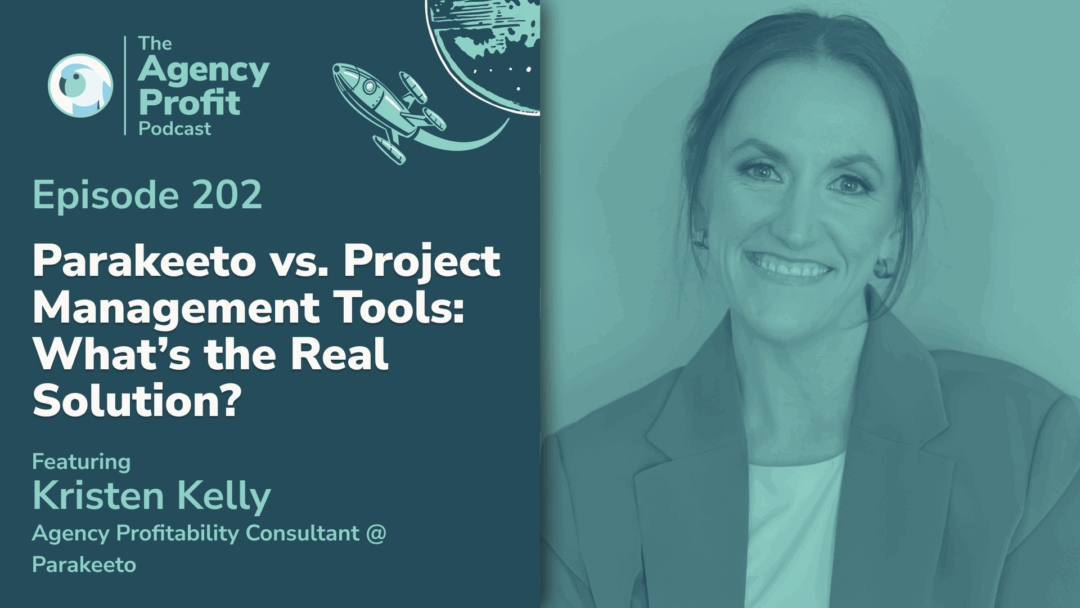
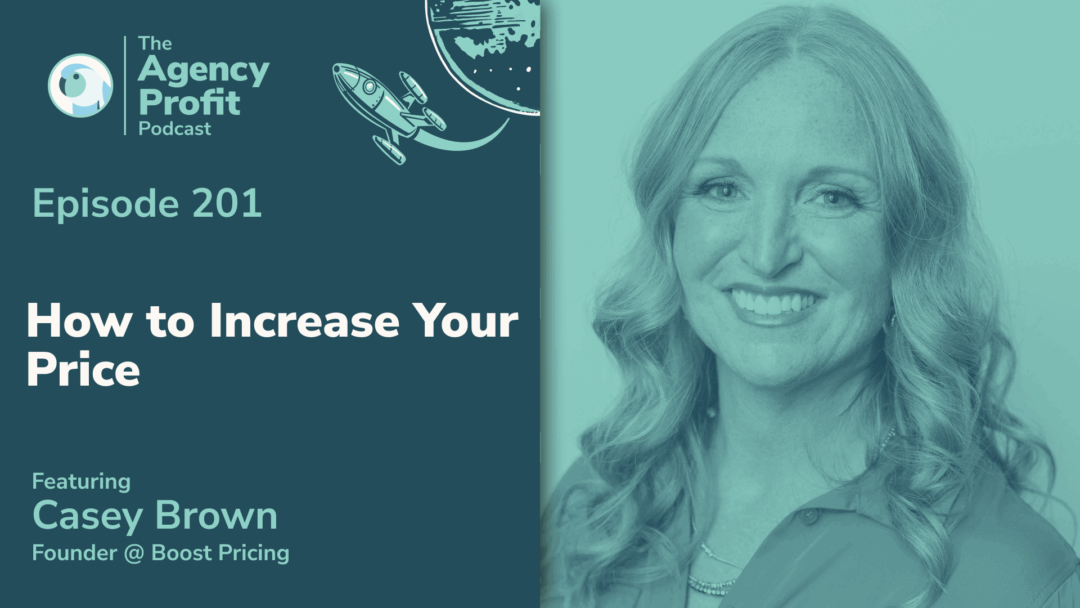
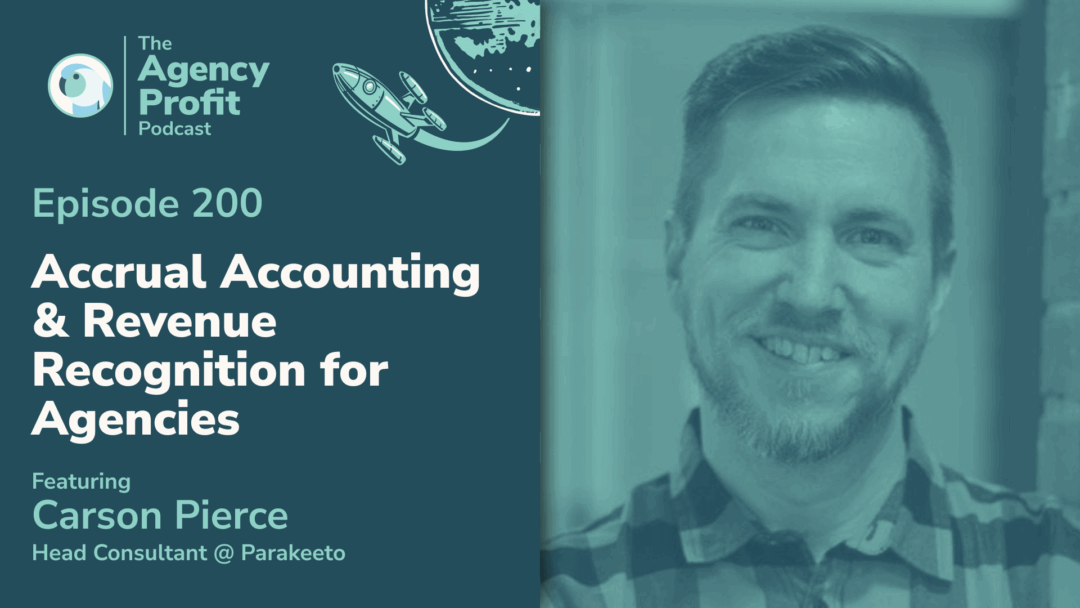

0 Comments